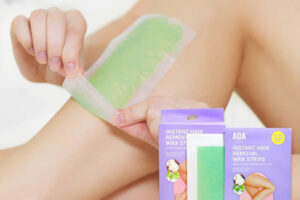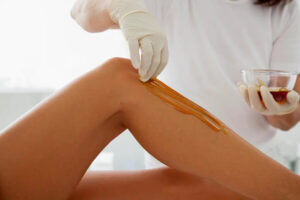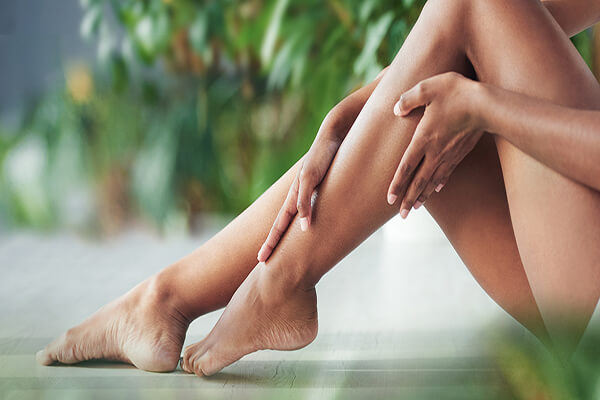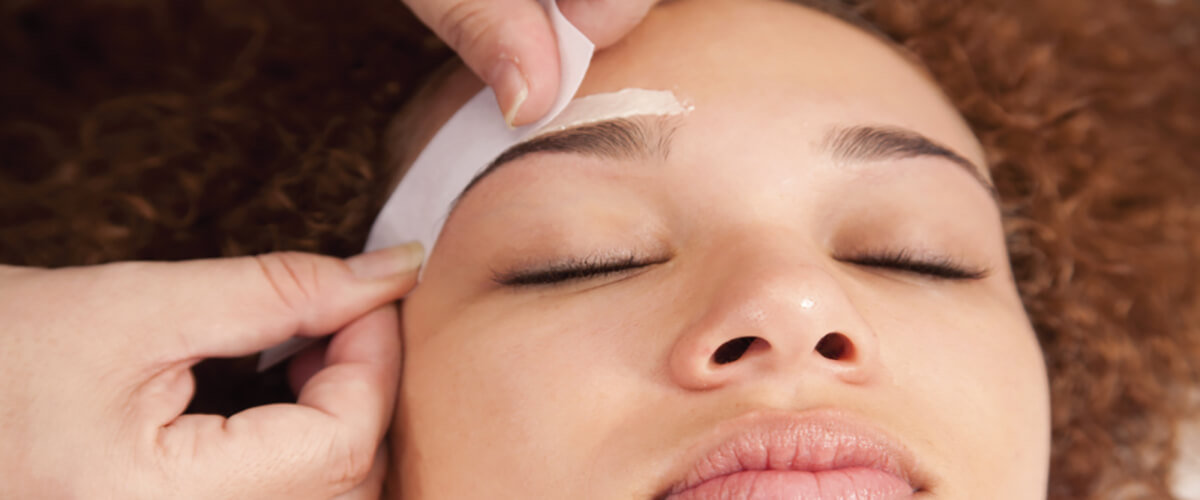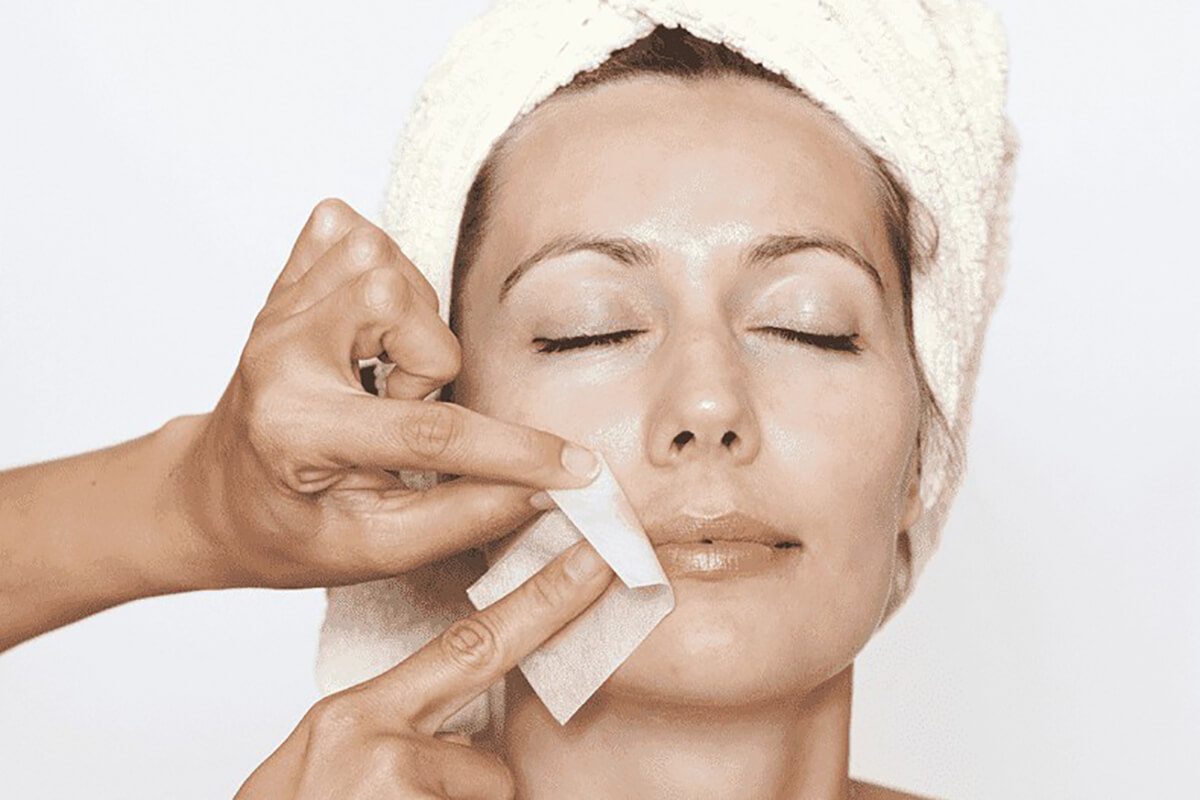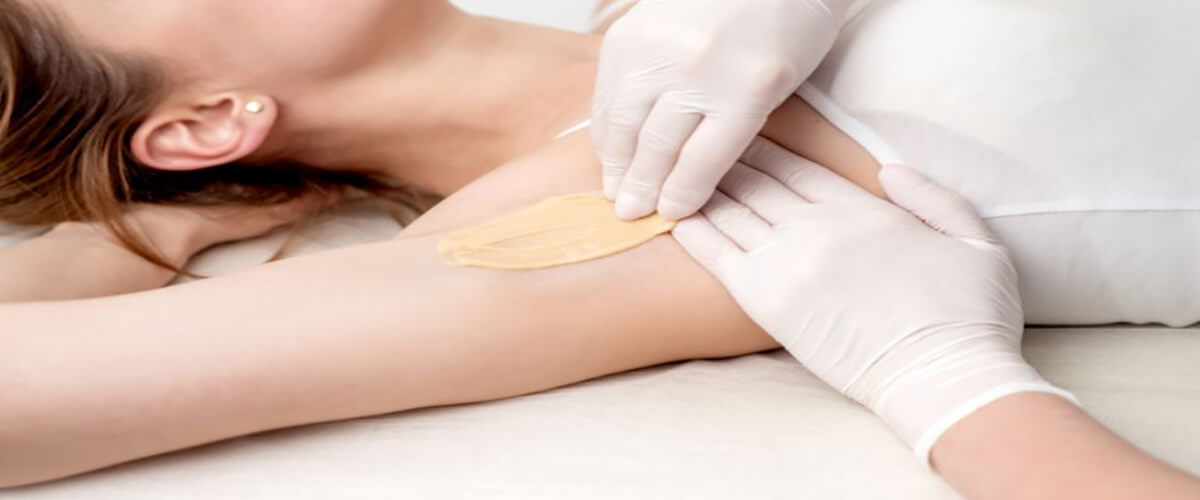There is nothing worse than a skin lift from waxing, or a client getting wax burns on their face or body while providing services to you or your staff. You might not even notice it at first – but then the surrounding skin starts to normalize, and there it is: a steaming red hot spot that makes you feel chilled all over.
There is nothing worse than a client suffering from wrinkled skin or wax burns on their face or body from waxing during a service. Even the most experienced esthetician may not notice this at first after hair removal, but it will be noticeable once the skin starts to normalize and those red spots start to form. On top of that, there’s the stress of not being sure if a client will scar, be prone to hyperpigmentation, or if they’ll book with you again.
Whether it’s facial wax burn, brow wax burn, or Brazilian wax burn, you don’t want to see your clients suffer any form of injury or burn. In this article, we’ll discuss how to prevent skin lifts during hair removal, how to heal wax burns quickly, and possible causes of skin lifts after hair removal.
On top of that, we’ve also included some treatment tips and ways to get yourself covered and covered by salon coverage in the event of a wax burn or skin lift.
1. What is waxing and wrinkle lifting?
Skin lifting from waxing, also known as wax burn, is a wound caused by the wax grabbing more of your client’s skin than you intended. Typically, wax burns only go deep to the surface of the skin, but may leave the client susceptible to bacteria, scarring, and pigmentation. Wax burns on the legs or back are less common, but more common during an eyebrow or Brazilian waxing procedure.
A wax burn on your skin, an eyebrow wax burn, or a Brazilian wax burn can all look like a severe scrape or a minor scrape on your knee. Sometimes, you and your client won’t even notice it’s there until it starts to scab over within a day or two. Depending on the client and the size of the burn, minor abrasions will not affect them, but for more severe cases, it is important to have a good aftercare routine to heal the wound properly.
2. What causes wax peeling?
Here are some factors that can cause facial or body wax burns:
- Use inferior wax
- A wax that was inappropriate for the client’s skin type was used
- Waxing when you shouldn’t
- Apply wax that is too hot for your skin
- Waxing the same area multiple times
- Retinol and Waxing
1) Will waxing tear your skin?
As we mentioned, waxing-induced skin lifting occurs when the wax grabs both hair and skin when applied, resulting in the lifting/burning of both hair and skin.
This can be considered a form of “tearing” or “tearing,” but is often referred to as “lifting” because the skin is simply burned rather than actually torn. Don’t worry – even if it looks like your eyebrow wax has been ripped off, it’s not! It’s just a burn that can be soothed and healed quickly.
2) Wax burn caused by inferior wax
When you use low-quality wax, you increase the likelihood of skin damage due to questionable melting points, uneven heating, breakage, or the need to wipe an area multiple times because the wax is ineffective. However, there is an easy solution and that is to use Auperwel Premium High Quality Wax!
3) Using wax that is inappropriate for the client’s skin type
To keep your skin safe, remember to use the correct type of wax for your client’s skin. Understanding skin type and sensitivity is crucial for safe, successful hair removal waxing.
4) Best wax for sensitive skin
To prevent your skin from tearing due to waxing, it is important to use only the highest quality wax. Especially for sensitive skin, use only waxes formulated specifically for these uses.
Star Soft Wax: Designed for those with irritated, dry, or aging skin, this wax is ideal for soothing inflammation, irritation, and redness while providing clients with smooth, long-lasting results.
Coral Hard Wax Beads: Another powerful product for ultra-sensitive skin, our Coral Membrane Hard Wax detoxifies the skin and speeds recovery while leaving it hair-free and glowing.
Creamy Pink Soft Wax: Ideal for use on delicate, hard-to-reach areas, this wax is gentle on the skin while still grabbing the finest hairs.
Non-Woven Soft Wax Strips: Pair these durable strips with soft wax for stunning and effective results every time.
5) Is it safe to wax all areas?
Hair removal is generally safe for most skin types and areas but is not recommended for patients with diabetes, varicose veins, rosacea, phlebitis, circulation problems, or skin conditions that cause thinning or sensitive skin. Waxing is not advisable for people with medical conditions such as lupus, or HIV, or those undergoing cancer treatment.
Pregnant women and people taking birth control pills, blood thinners, or hormone replacement drugs should be extra careful when removing hair. Don’t wax people with tretinoin or other prescription medications or strong acne treatments like Differin. If you see inflamed, irritated, or sunburned skin, avoid it. Do not wax body piercings, rashes, moles, or warts. You should also avoid hair removal for anyone who has had Botox, retinol, sunburn, or recent hair removal.
Make sure your clients know all of this information before using your spa bed, put it all on your website, and have them sign a waiver saying they understand the terms before booking.
6) Applying too hot wax to your skin
Whether you use hard or soft wax, if the wax is too hot, it will fuse with the top layers of your skin and pull those layers away with the hair. To achieve the correct temperature, follow the instructions of a professional wax and wax warmer and keep the wax at a thick, honey-like consistency. Always test your wax before using it to take hot wax out of the skin-lifting equation.
7) Wax the same area multiple times
Generally speaking, if you use the right wax correctly and at the right temperature, you can apply wax multiple times to the same area on areas with thicker skin, such as your legs or back. Always use your best judgment! Generally, it is not wise to do two treatments on sensitive skin, facial areas, or Brazilian areas.
Do not re-apply the skin with soft wax, especially the facial area. You can use the same non-woven wax strip and rub the removed wax over your skin several times if you feel your skin is in good condition, but as always, use your best judgment.
If you find missed hairs, insert them with tweezers or a smaller waxing spatula to avoid overlapping onto previously waxed skin (if your skin is sensitive).
3. Retinol and waxing
“Retinol” contains vitamin A derivatives (a type of retinoid). Retinol products, while used as an ingredient in many skin care products, may leave your skin vulnerable to damage from external sources like waxing.
Some customers may not realize they are taking a powerful derivative of vitamin A. When asked if they are using retinol products, they may unknowingly answer “no” on the intake form, thereby increasing the risk of damage from retinol use and waxing. Make sure you fully educate your clients on retinol and make sure they double-check their skincare ingredients to avoid mishaps.
Here is a list of retinoids that may cause the wax to burn if used within a week or so of your waxing service:
- Retinol A
- Microretin A
- Retinol, retinyl palmitate
- retinaldehyde
- adapalene
- Isotretinoin
- Vitamin A acid (Renova)
- Tazarotene
Instruct your clients to avoid tretinoin five to seven days before their appointment or have them reschedule. Always ask your client if they are using retinoids before providing services unless you know for a fact that they are not, then ask anyway to avoid mixing retinol and waxing.
4. What to do if your client gets wax burn
No matter how it happened, when you notice damage, get it treated immediately. Use the word “we” as a warning to your client until the cause of the burn is completely determined:
If your client doesn’t know what wax burn is, educate them so they know how long it lasts and how to get rid of it. Typically, a wax burn will heal within four or five days, but it may take about a week or two to completely disappear. This does not include potential scarring or pigmentation.
Removing wax burns takes time. It’s okay to downplay it when you’re in a limiting panic moment, but it’s important to emphasize home care education on how to heal torn skin from waxing.
5. How to treat wax burns
To treat wax burns, run the affected area under cold water for 20 minutes, then apply cold pressure to it to relieve pain or inflammation. Do not place ice cubes or ice packs in the area. Follow with an antibacterial soothing ointment such as Neosporin or Bacitracin and continue treating the area as needed.
1) How to heal torn skin caused by waxing
Follow these tips as soon as possible and have the client continue with these steps for ongoing wax burn treatment.
- Cool the skin with water (submerge the area or pour over it for five to twenty minutes)
- Cleanse with a gentle cleanser that contains no toxic ingredients or alcohol
- Use ice cubes or an ice pack covered with a flannel or paper towel to reduce swelling and relieve pain.
- Apply 100% pure aloe vera gel to the area several times daily.
- Use neosporin or antibiotic ointment.
- To avoid infection, bandage the area before the client leaves. They can change the bandage daily at home if they feel it is necessary.
- Use over-the-counter ibuprofen to relieve pain and reduce swelling.
- Avoid applying makeup to the area.
- Wear sunscreen to reduce pigmentation.
If you’re wondering how long it will take for waxed torn skin to heal, it’s usually about 1-2 weeks. That said, everyone’s skin is different, and some people’s skin heals faster or slower than others.
6. Determine the cause of wax burn
Along with controlling skin damage, the cause should also be determined. Evaluate the following:
- Take a quick look at your professional wax warmer and note its temperature. Is the temperature safe?
- What about the wax itself? Is it best suited for the client’s skin type?
- Have you walked through this area many times?
- Confirm with the client that they have not used any retinoids on the list in the last week.
“The types of retinoids are numerous, as we have already discussed. Let’s double-check that you are not using anything on this list, as they may be in many of your daily products.”
7. What should I do if it causes a wax burn?
In some cases, clients may be embarrassed to admit that they caused the burn; in other cases, it may be you who caused the burn. With waxing, there is no guarantee that the client will not suffer a wax burn or brow damage at some point during the hair removal process.
Yes, they come to you because they trust you, but there’s always a one-in-a-million chance that things may not go as planned. It is here that your wax salon policy comes into play.
If a beautician fails to follow any of the above advice (or even if they do), or if they allow an inexperienced assistant to take the client away without supervision, the client can make a negligence claim. They can also just forget about the whole thing and think about it.
8. Wax salon insurance policy
Since you never know what might happen, make sure you have a good salon policy that includes client exemptions. First, check your state’s laws to determine what type of customer exemption you can offer your customers when making a reservation. Work with your representative to develop a salon exemption form that best represents your business. A client waiver is a form that does not hold you liable for certain damages that may occur while visiting the salon.
A good beauty business insurance plan should protect you from negligence claims, emotional trauma, lost wages, or a breach of sensitive customer data. General liability insurance should protect you against property damage claims, personal injury, related medical bills, and defamation. In addition to taking precautions and treatments to ensure your client’s safety and protection in the case of wax burns, take any necessary steps to mitigate any ill intentions in a way that feels comfortable to you.
This could include not charging for an appointment or sending a follow-up card, for example. Whatever you believe is the reason for a skin lift, please use your best judgment and proceed in a manner that is consistent with your salon policies and client exemptions.
9. Conclusion
As a cosmetologist, your goal is always to provide the best service to your clients at all times. You’ve probably never encountered a client with wax burns, but if you do, it’s best to be prepared to treat, evaluate, and understand best practices. Since you always want your customers, yourself, and your business to be safe, make sure your base is secure. Thoroughly train yourself and your staff on how to handle wax burns, and understand salon policies and client exemptions for skin lifting caused by wax removal.
How useful was this post?
Click on a star to rate it!
Average rating 0 / 5. Vote count: 0
No votes so far! Be the first to rate this post.



